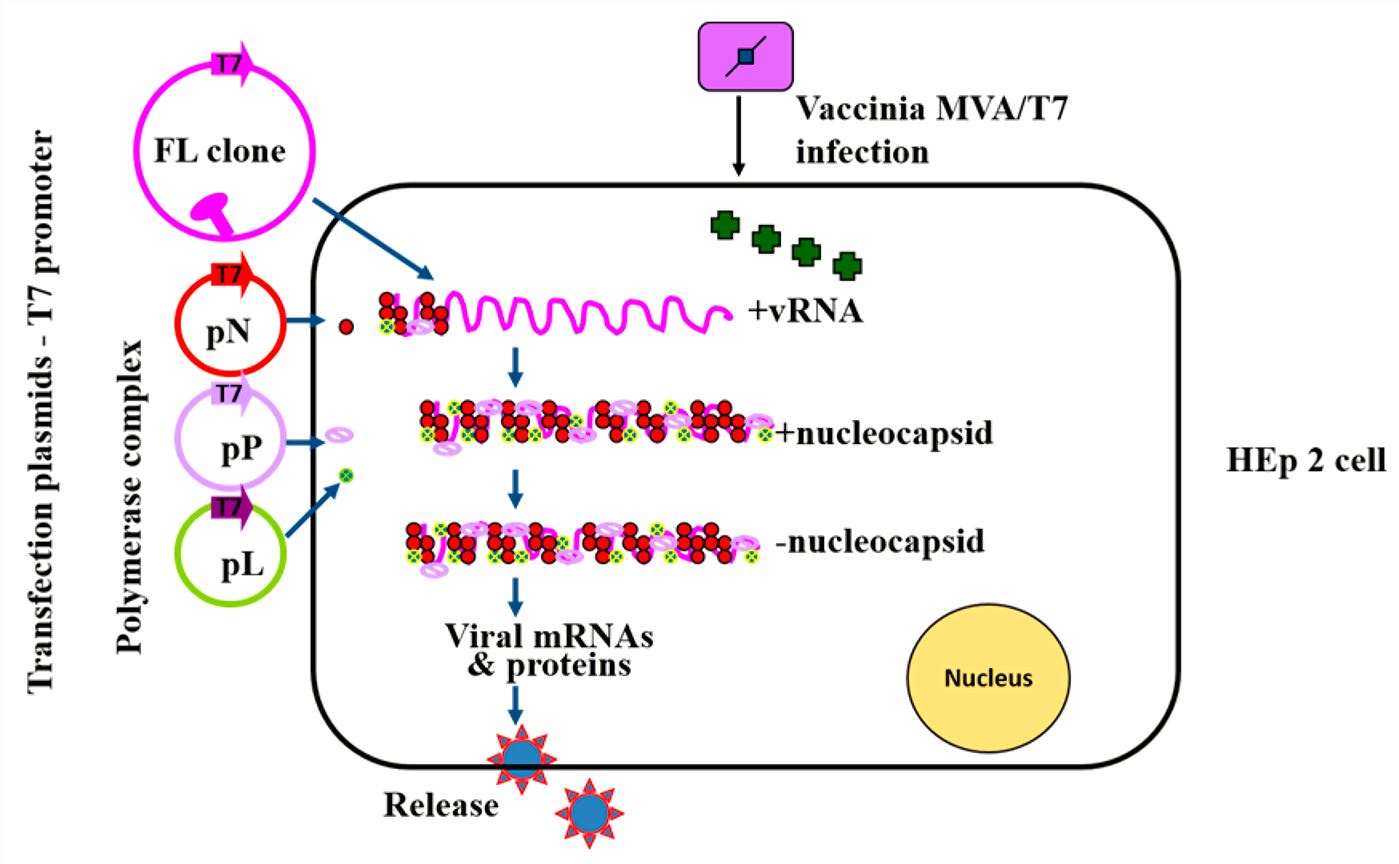Newcastle Disease Virus (NDV) based Vaccine-Vector Design Service
Viral vaccine vectors have shown to be effective in inducing a robust immune response against a variety of vaccine antigen. Newcastle disease virus (NDV), an avian paramyxovirus, is a promising vaccine vector against human and veterinary pathogens. The emergence of a reverse genetics system for manipulating the NDV genome not only enables us to study the molecular biology and pathogenesis of NDV but also provides a theoretical basis for the development of novel NDVs as vaccine vectors for human and animal diseases.
Background of Newcastle Disease Virus
Newcastle Disease Virus (NDV), a member of the genus Avulavirus in the family Paramyxoviridae, is a non-segmented, negative-sense, single-stranded RNA virus. The genome of NDV is approximately 15.2 kb in size which contains six transcriptional units in the order of 3’ -N-P-M-F-HN-L-5’. Each transcriptional unit contains a major open reading frame flanked by short 5’ and 3’ untranslated regions (UTRs) followed by conserved transcriptional initiation and termination control sequences, known as gene start (GS) and gene end (GE), respectively. The genome encodes nucleocapsid protein (N), phosphoprotein (P), matrix protein (M), fusion protein (F), hemagglutinin-neuraminidase protein (HN), and a large polymerase protein (L). The genomic RNA, together with the N, P, and L proteins, form the ribonucleoprotein complex (RNP), which serves as the active template for transcription and replication of the viral genome. NDV strains are categorized into three main pathotypes: lentogenic (avirulent), mesogenic (moderately virulent), and velogenic (virulent), based on their pathogenicity in chickens. Naturally occurring low-virulence NDV strains, such as LaSota and B1, are widely used as live attenuated vaccines to control Newcastle disease in poultry.
Why Newcastle disease virus can be used as Vaccine-vectors?
Avirulent NDV strains LaSota and B1 are commonly used as vaccine vectors because of their proven track records of safety. During the past decade, NDV has been confirmed to be a suitable vector to express foreign genes using reverse genetics technology for vaccine and gene therapy purposes. Due to host range limitations, NDV generally does not cause persistent infection in mammals, and it differs from the antigenicity of mammalian paramyxoviruses, indicating that mammals would not be susceptible to NDV. NDV grows to high titers in embryonated eggs, making it effective for vaccine production. In addition, the virus can replicate well in Vero cells, which is acceptable for human vaccine development. NDV is infected by the intranasal route and has been shown to induce humoral and cellular immune responses at the mucosal and systemic levels in murine and non-human primate models. These demonstrate that the NDV vector vaccine provides a convenient platform for rapid, effective and economical immunization. Therefore, NDV is a promising vaccine vector against human and animal pathogens.
The Design for Newcastle Disease Virus as Vaccine-vectors
Since reverse genetics technology was first used to rescue infectious NDV from recombinant cDNA in 1999, many NDV clones have been developed and used as vectors to express foreign genes for vaccine or gene therapy purposes. Similar to other negative-strand RNA viruses, infectious NDV can also be recovered from cloned cDNA by transfecting cultured cells with plasmids encoding the viral components of full-length antigenomic RNA and ribonucleoprotein (the N, P, and L proteins) involved in replication and transcription under the control of bacteriophage T7 RNA polymerase promoter. This method, also known as reverse genetics, is now available for all three pathogenic NDV strains. Typically, a foreign gene flanked by NDV GS and GE sequences is inserted into the 3' non-coding region of the NDV genome as an additional transcription unit. Due to polar gradient transcription, the foreign gene is more efficiently expressed near the 3' end of the genome.
 Fig. 1 Plasmid-based recovery of recombinant NDV. 1
Fig. 1 Plasmid-based recovery of recombinant NDV. 1
Advantages of Newcastle Disease Virus as Vaccine-vectors
- Highly safe in humans due to host range restriction
- Replicate well in vivo
- The stability of the foreign genetic inserts
- Grow to high titer in cell lines
- Can induce a robust immune response
With a professional team and years of experience, Creative Biolabs has an advanced platform for the development of vaccine vectors, providing customers worldwide with the most complete and best multiple vaccine vector design services. If you are interested in any of the Newcastle Disease Virus vectors, please feel free to contact us.
Reference
- Kim, Shin-Hee, and Siba K. Samal. "Newcastle disease virus as a vaccine vector for development of human and veterinary vaccines." Viruses 8.7 (2016): 183. Distributed under Open Access license CC BY 4.0, without modification.
All of our products can only be used for research purposes. These vaccine ingredients CANNOT be used directly on humans or animals.


